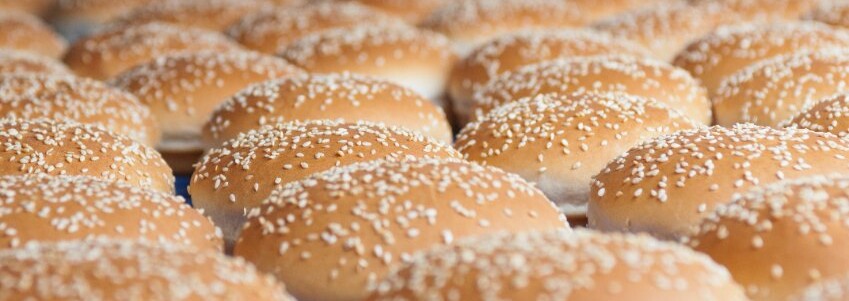
Nowadays, buns must also compete against perceived healthier options with lower carbohydrate counts and other nutritional advantages. These variables have produced an unpredictable environment for bun manufacturers recently. There are three main factors affecting the hamburger bun market:
- QSR chains moving away from emulsifiers like SSL and DATEM to cleaner label solutions
- A shortage of ingredients like gluten, emulsifiers and starches have prompted many bakeries to seek better flour and clean label solutions
- A demand for healthier versions of hamburger buns like sourdough and keto
Bun producers are now more focused on targeting premium-type hamburger buns made out of whole grain dough and indulgent ingredients like butter and eggs. Being creative but also offering cost-effective alternatives has become a priority now. Finally, ensuring a clean label and cost affordable hamburger bun is essential for this market.
Bun Production
Hamburger buns are soft, round and sliced rolls with an overall weight less than 8 oz or 227 g. Depending on the customer and fast food chain, hamburger buns may have a diameter range of 4 in (10 cm) to 5 inches (13 cm) and a total height of 1.5 in (4 cm) to 2.5 in (6 cm).
Hamburger bun production is a straightforward process that is usually accomplished on a high output line. Depending on the customer or QSR chain, the type of sandwich build, shelf-life expectations and market trend, formulations may highly vary.
What’s a typical bun formula? Check out this one in our free technical paper!

